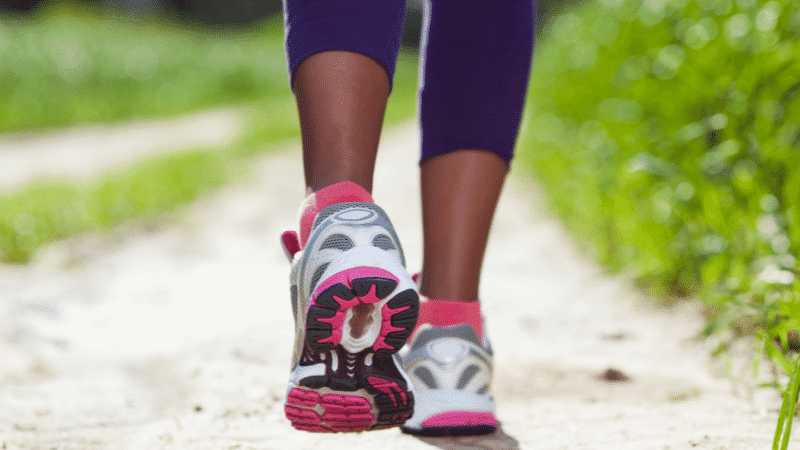Written By: Sally Ryan, PT, DPT, OCS, CSCS, Clinical Director, SportsCare Hoboken
Summer is the time for runners to shine. Taking in vitamin D while developing a glistening sweat and basking in natural endorphins.
There’s nothing better. If you’re not convinced, follow these 10 running tips in order to help enjoy your summer runs and avoid injury.
1. Hydrate throughout the week.
Hydration is key when running in the summer!
Whether you are on the treadmill or outside under the sun or summer stars, you need to be hydrated.
Drinking a glass of water right before you head out for your run will not be enough (and will most likely result in a distracting full bladder while running).
The body uses and loses water throughout the day, so it is very important to maintain a hydration routine.
It is recommended for the average person to drink 11 to 15 cups of water a day but if you are very active, or running a lot, you will need to drink even more to make up for water loss!

2. Don’t skip your dynamic warm up.
Despite exercising in warm summer temperatures, it is still very beneficial to actively warm up the body to help avoid injuries and last longer throughout your runs with less aches and pains.
Running is a full-body exercise. Therefore, your legs, arms, spine, and hips all need to be primed to move.
Take 5-10 minutes prior to running to perform dynamic stretches while walking, skips, lunges, squats, arm actions, and spinal mobility.
3. Focus on form and running mechanics.
The most important thing about running is to enjoy yourself!
But every so often, take a moment to be mindful of your running form, particularly upon fatigue.
Keep your head and neck in neutral and avoid extending it backwards.
Keep your arms down by your side moving front to back with elbows bent around 90 degrees.
Relax your hands. Your trunk should have a slight forward inclination to keep your momentum forward while maintaining level hips.
Drive each leg straight through without allowing for your heel to turn inward and land just in front of your body.
4. Work on cadence intermittently throughout your run.
Cadence, or steps per minute, is one of the most important things to consider when trying to reduce the likelihood of injury.
The quicker you can pick up your feet, the less time spent on the ground, and the less stress through the legs.
Start to get an idea of your average cadence from your smart running watch or discuss it with your local SportsCare Physical Therapist.
Find a song that has beats per minute that is the same as your new cadence goal (about 5% faster than what you are currently running).
Play a song or two intermittently throughout your run to practice your new cadence.
5. Seek out different running surfaces and running routes.
It is more likely that an overuse injury will occur if you run the same route on the same surface every time you go out for a run.
It is most beneficial to change your running environment to help decrease and alter the direction and type of forces through your legs.
This can include roads, sidewalks, gravel paths, beaches, treadmills, tracks, and trail running.
With all these options available, your body will appreciate the new scenery in addition to the different senses and proprioceptive stimulation through your legs.
6. Make time for a cool down.
After completing your run, it is important to take a few minutes for a slow jog or walk to get your heart rate down and perform deep breathing exercises.
Allow yourself time to settle the mind as you move into a new space of pride, accomplishment, and the runner’s high.
7. Make time for post-run static stretching
Don’t forget to treat your muscles to some static stretching after your run.
They deserve it!
Stretching should really be done daily, but if you are not in that routine, at least take the time to stretch out after exercising.
Hold each stretch for a total of 90 to 120 seconds on both sides of the body.

8. Don’t run through an injury
If you are experiencing pain while running, it is not recommended to toughen it out and push through.
You should not be altering the way that you’re moving or running to avoid pain.
Contact your local SportsCare Physical Therapist as soon as you notice the pain in order to receive instruction on how to treat it while staying active and to return to running as soon as possible.
9. Update your running shoes.
Running shoes should only be used for about 300-500 miles, which, if running 20 miles a week, will happen in 4-6 months.
Look at your running shoes and make sure they are not too worn out at the bottom.
New running shoes should be purchased at least every 6-12 months, depending on your mileage.
Treat yourself!

10. Integrate strength training and at home physical therapy exercises into your weekly exercise routine.
It is important to maintain strong, stable joints throughout your legs to help avoid injury.
Strength training 2-3x/week will help reduce the likelihood of overuse/running injuries and will often help improve your running speed and running mechanics.
Hopefully, these running tips will allow you to safely begin to run, return to running, or continue to run!
If you have any questions regarding the above, please don’t hesitate to reach out to me in Hoboken, or your local physical therapist at SportsCare Physical Therapy.
Complementary wellness screens are provided in addition to Video Gait Analysis for runners and walkers who are interested in improving their form.
From one fellow runner to another, take it one step at a time and enjoy the journey!
I’ll see you out there!


